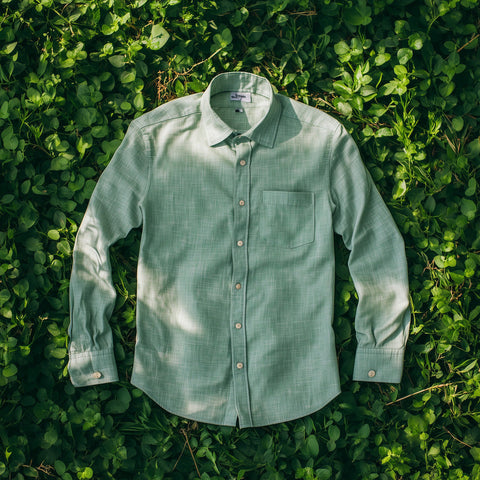
Where Do Natural Fibers Come From? Why Are They Increasingly Popular?
Natural fibers, derived from plants, animals or minerals, are becoming the preferred choice in the green fashion wave – where wearers choose materials not only for beauty but also for responsibility.
When Wearers Start to Care About What's Hidden in the Fabric
In the wave of sustainable fashion, what makes an item popular is not just the style or price, but deep down in the fibers that make it. Modern youth are increasingly concerned about the origin of materials, the production process and the environmental impact of the item. That is why natural fibers – materials of plant, animal or mineral origin – are becoming popular again.
Not only are natural fabrics eco-friendly, they are comfortable to wear, biodegradable, and generally leave a smaller carbon footprint than synthetics. Every fiber tells a story – and the wearer is the one who tells the next chapter.

Where Do Natural Fibers Come From?
There are three main groups that make up the natural material system in fashion:
The first group is vegetable fibers . This is the largest group, including cotton, linen, hemp, jute, ramie, and bamboo. These fibers have the common properties of being absorbent, breathable, biodegradable , and easy to grow without chemicals.
Next are animal fibers , with familiar representatives such as silk, wool, cashmere, alpaca. These fibers often have the ability to keep warm, insulate well, have high elasticity and bring a luxurious feel to the outfit. However, they need to be ethically exploited and controlled to ensure animal welfare.
The last group is mineral fibers – less common, represented by asbestos fibers (which have been restricted due to toxicity), but recently some research is directed towards developing fibers from basalt or natural silica for textile applications.

Why Are Natural Fabrics Popular Again?
Not only because of the environmental factor, natural fibers bring a very “real” feeling when wearing. You can feel every roughness, graininess, lightness, roughness or natural softness that synthetic fibers cannot reproduce. This feeling makes the wearer feel like touching nature, even when in the middle of the city.
Natural materials are also often used in minimalist designs, associated with the philosophy of wearing long – wearing carefully – wearing selectively . That is why those who love sustainable fashion often turn to linen, organic cotton, raw silk or recycled denim as part of their lifestyle.

Natural Fabrics – But Not Always “Good”
It’s important to be clear: not all fabrics labeled “natural” are good for the environment. Some cotton, though a plant fiber, requires a lot of water and chemicals to grow. So organic cotton – grown without pesticides and without genetic modification – is the truly sustainable solution.
Similarly, bamboo fabric needs to be processed properly without chemicals to meet bio standards. Otherwise, industrial bamboo fabric production can still cause water pollution and soil degradation.
It is not only the type of fiber that matters, but also the manufacturing process, the growing ecosystem and the product life cycle .

When Dressing Well Is Also A Lifestyle Choice
Choosing natural fibers is not just a choice of material – it’s a choice of lifestyle. When you wear organic cotton, you’re saying “I care about the environment.” When you choose linen, you’re saying “I care about the environment.” When you wear raw silk, you’re saying “I appreciate craftsmanship.”
Brands like Root Rotation are shifting towards natural, recycled and traceable materials. Not to follow trends, but to build a fashion value system that is linked to the environment, society and individuals.
Related articles:
Bamboo fabric – green material is refreshing the way Gen Z dresses
What is woven fabric? A classic material in every fashion lover's wardrobe
Fabric Handbags – When Accessories Become a Statement of Stylish Lifestyle

